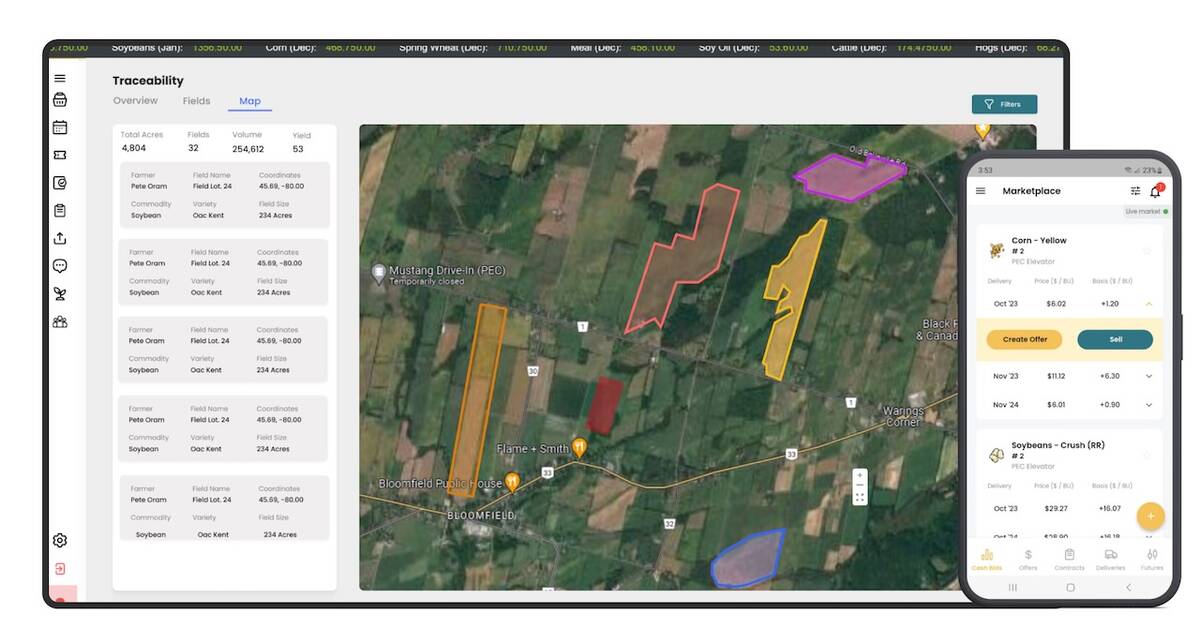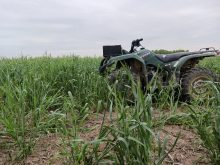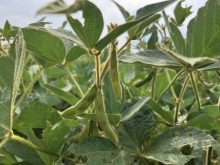Organic production is never an easy prospect, and trying to do it without tillage presents additional challenges.
But for Aaron Bowman, it’s been possible with a different kind of planning, monitoring and adjusting to conditions during a growing season.
Bowman, who farms east of Oshawa, raises beef cattle as part of a 350-acre operation, including 240 acres that are certified organic. Corn grown for grain or forage is the primary crop, along with three or four years of alfalfa, oat, pea or sorghum as a cover.
Read Also

Ontario company Grain Discovery acquired by DTN
Grain Discovery, an Ontario comapny that creates software for the grain value chain, has been acquired by DTN.
He uses cereal rye as a cover-crop weed suppressant in his organic no-till soybeans, which he’ll grow in years less-favourable for corn.
Why it matters: With careful management and use of a rye cover crop, organic no-till soybean production can be profitable.
For his organic production, Bowman uses an RTK-controlled electronic eye that kills weeds by moving a “scuffler” on the row unit. If wet weather keeps him from scuffling the first few weeds in his corn, the crop’s done.
Although he hasn’t grown organic soybeans with a rye cover in the past two years, he started 2023 with three fields under rye with plans to adjust if soybean prices spike.

It’s a different concept, not just for soybean production, but also in organic practices. The Ontario Soil and Crop Improvement Association (OSCIA) studied the concept for three years as a Tier 2 project, funded by the Ontario agriculture department and the Canadian Agricultural Partnership.
“A lot of it comes down to how you get it ready and when you terminate (the rye),” says Bowman, who consulted with Erin Silva from the University of Wisconsin.
“Broadcasting rye seed has been a game changer and most people drill their rye, but you’re leaving a space, and we know that weeds will find those spaces.”
The first year he worked with organic soybeans was 2016, and Bowman concedes he crimped too early, allowing the rye to regrow and consume available moisture. Thankfully, it was only nine acres. He grazed cattle on it, then turned it under and planted sorghum. He returned to it in 2018 but not before consulting with Silva.
“She made it clear that I crimped too early,” says Bowman. “She said it needed to be at 100 per cent anthesis, getting to that milk stage where you start to see small seed. When you crimp it, it’ll stay down.”
His 2018 results were better, when he crimped June 6 to 7. He also uses a planter for soybeans going into the rye, running 20-inch rows and then doubling back, with 225,000 seeds per acre.
It can take longer for the soybeans to canopy, which means giving up more sunlight.
“I’m (a) firm believer that the planter puts the seed where it belongs and you have a lot more control over depth, especially with our hydraulic down-force,” says Bowman. “There might be an inch to an inch-and-a-half of residue that you have to compensate for and ensure you’re still planting at depth and to moisture.”
Bowman also likes the flexibility. If his cattle need more feed or grazeable acres, the rye is available.
Better for organic certification
For Jake Munroe, no-till organic soybean production has been a learning experience, especially as part of the study alongside OSCIA co-operators. It’s also well-suited to established organic growers versus those exploring a shift from conventional cropping.
Yields in the three years averaged 32 bu./ac. and were 40 per cent lower for cover crop-based organic no-till soybeans compared to soybeans under tillage-based organic production and convention no-till with use of herbicides.
Ideally, the cereal rye mulch will suppress weeds until the soybean canopy shades out weeds.
“You can still be profitable with yields that aren’t as high,” says Munroe. “The comparison should be made between standard 30-inch, tillage-based organic soybean production and this cover crop-based organic no-till system.”
Lots of work in advance
Munroe has authored an online resource about seeding the rye cover, gauging its weed suppression viability and roller-crimping. The document can be found at fieldcropnews.com by searching “organic no till soybean production.”













